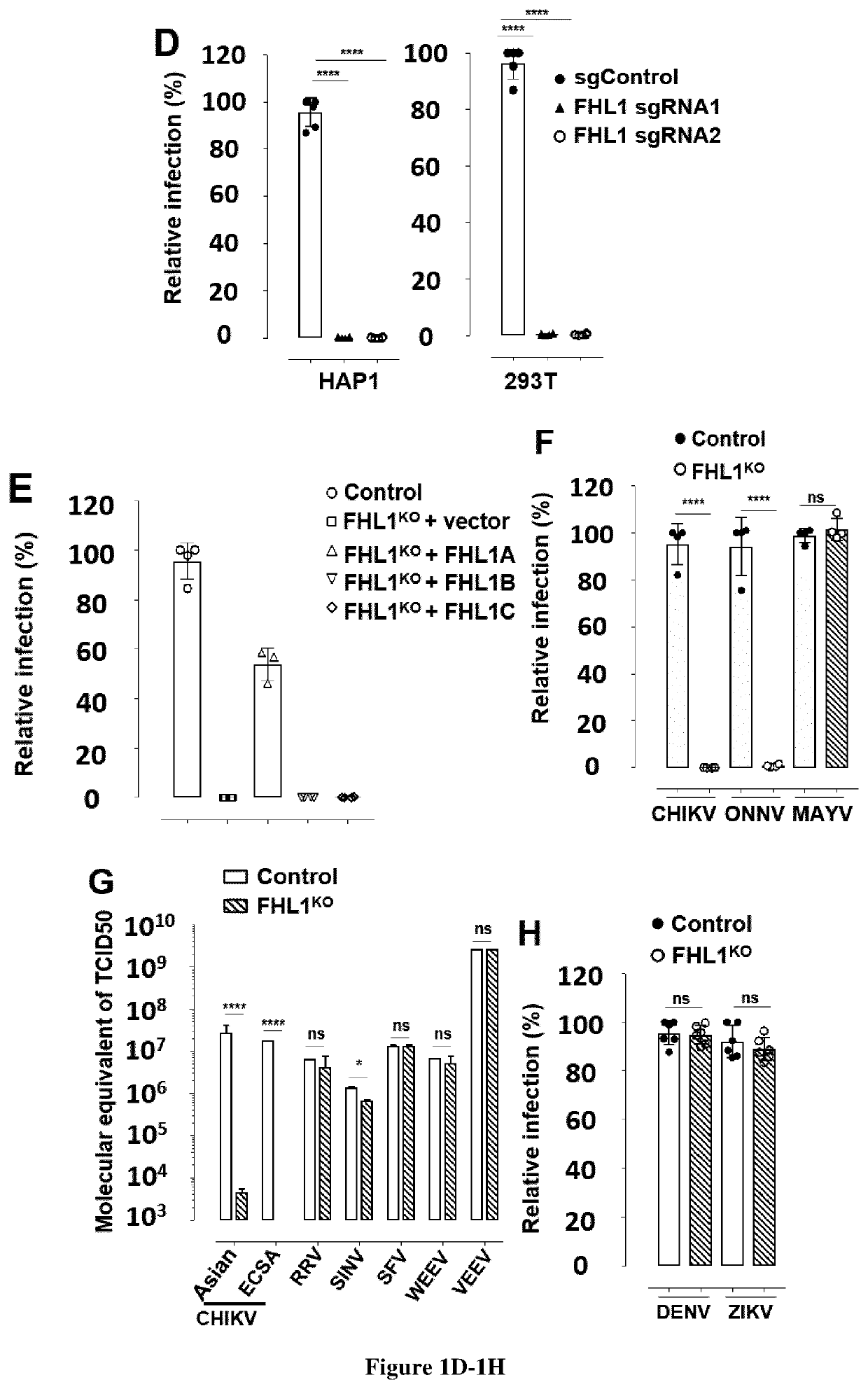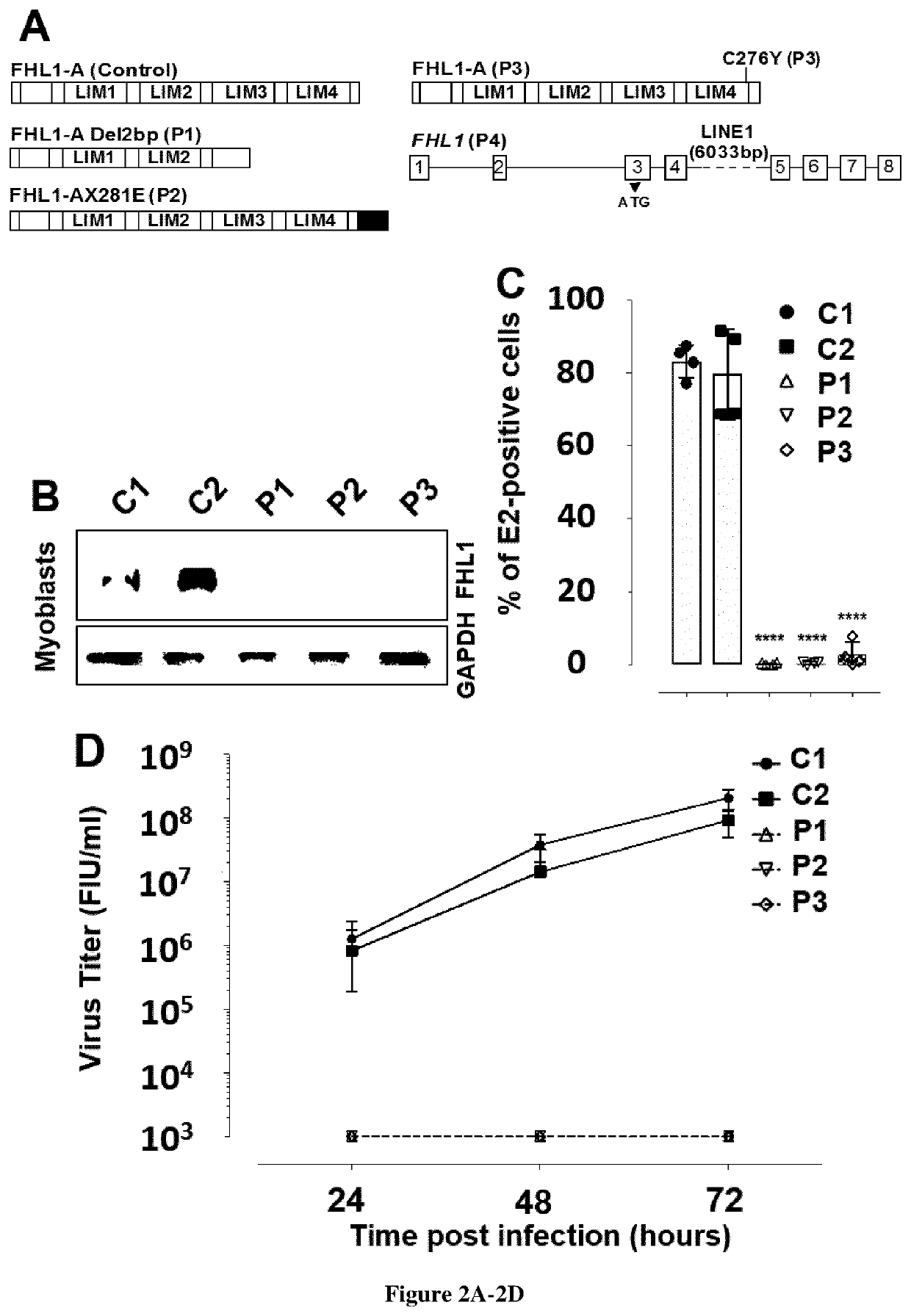Methods for screening inhibitors against chikungunya virus and for determining whether subjects are predisposed to infection by said virus
a technology of chikungunya virus and inhibitor, which is applied in the field of screening inhibitors against chikungunya virus, can solve the problems of no vaccine or treatment for human protection, and significant global public health problems
- Summary
- Abstract
- Description
- Claims
- Application Information
AI Technical Summary
Benefits of technology
Problems solved by technology
Method used
Image
Examples
example 1
[0096]Chikungunya virus (CHIKV) has caused recent outbreaks associated with severe morbidity. Currently no vaccine or treatment exists to protect humans from CHIKV infection. Treatment is therefore purely symptomatic and is based on non-steroidal anti-inflammatory drugs. Accordingly, there is a high medical need exists to have new methods of screening of compounds which could inhibit chikungunya virus. Further to a CRISPR-Cas9 genetic screen the inventors now identify the four and a half LIM domains protein 1 (FHL1) has an essential host factor for CHIKV infection (FIG. 1A-H). In particular, they show that primary myoblast and fibroblast from FHL1 deficient patient are resistant to CHIKV infection (FIG. 2A-F). They also show that transfection of CHIKV(GAA) RNA in ΔFHL1 or control cells resulted in similar Rluc activities (Data not shown), indicating that FHL1 is dispensable for viral RNA translation. When similar experiments were performed with wild-type CHIKV RNA, a large increase ...
example 2
[0098]Methods:
[0099]Cell culture. HAP1 cells (Horizon Discovery), which are derived from near-haploid chronic myeloid leukemia KBM7 cells, were cultured in IMDM supplemented with 10% FBS, 1% penicillin-streptomycin (P / S) and GlutaMAX (Thermo Fisher Scientific). 293FT (Thermo Fisher Scientific), HEK-293T (ATCC), Vero E6 (ATCC), HepG2 (kind gift of Olivier Schwartz, Institut Pasteur, Paris, France), primary myoblasts and primary fibroblasts were cultured in DMEM supplemented with 10% FBS, 1% penicillin-streptomycin, 1% GlutaMAX and 25 mM Hepes. Human placenta choriocarcinoma Bewo cells were cultured in in DMEM supplemented with 5% FBS, 1% penicillin-streptomycin, 1% GlutaMAX and 25 mM Hepes. AP61 mosquito (Aedes pseudoscutellaris) cells (gift from Philippe Despres, Institut Pasteur, Paris, France) were cultured at 28° C. in Leibovitz medium supplemented with 10% FCS, 1% P / S, 1% glutamine, 1× non-essential amino acid, 1× Tryptose phosphate and 10 mM Hepes. All cell lines were cultured ...
PUM
| Property | Measurement | Unit |
|---|---|---|
| humidity | aaaaa | aaaaa |
| temperature | aaaaa | aaaaa |
| temperature | aaaaa | aaaaa |
Abstract
Description
Claims
Application Information
 Login to View More
Login to View More - R&D
- Intellectual Property
- Life Sciences
- Materials
- Tech Scout
- Unparalleled Data Quality
- Higher Quality Content
- 60% Fewer Hallucinations
Browse by: Latest US Patents, China's latest patents, Technical Efficacy Thesaurus, Application Domain, Technology Topic, Popular Technical Reports.
© 2025 PatSnap. All rights reserved.Legal|Privacy policy|Modern Slavery Act Transparency Statement|Sitemap|About US| Contact US: help@patsnap.com



